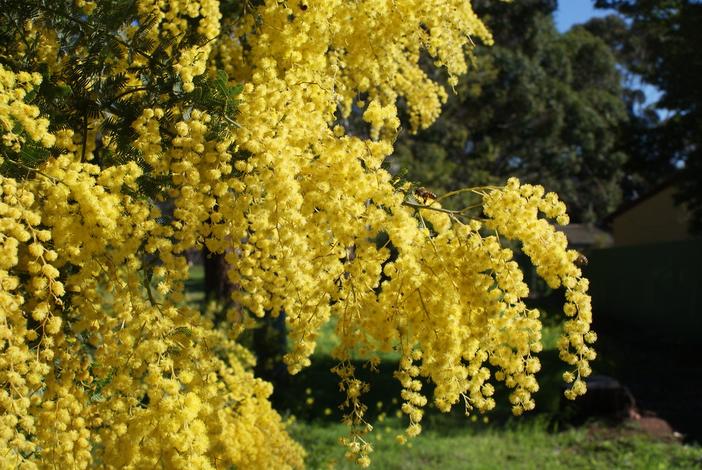Cootamundra Wattle
(Acacia baileyana)
Cootamundra Wattle (Acacia baileyana)
/
/

Sydney Oats
CC BY 2.0
Image By:
Sydney Oats
Recorded By:
Copyright:
CC BY 2.0
Copyright Notice:
Photo by: Sydney Oats | License Type: CC BY 2.0 | License URL: https://creativecommons.org/licenses/by/2.0/ | Uploader: expom2uk | Publisher: Flickr




























































Estimated Native Range
Summary
Acacia baileyana, commonly known as Cootamundra Wattle, is an evergreen shrub or small tree native to the temperate woodlands of southeastern Australia, specifically in New South Wales. It typically grows to a height of 20-25 feet (6-7.5 meters) and a width of 20-30 feet (6-9 meters). This species is characterized by its fine, feathery, blue-green foliage and striking yellow flowers. The flowers are small, with prominent stamens, and are clustered in showy, spherical to cylindrical inflorescences that bloom in late winter to early spring. While not native to forests, it thrives in open woodlands and grasslands.
The Cootamundra Wattle is valued for its rapid growth, ornamental silver-blue foliage, and vibrant golden-yellow flowers which provide a striking contrast against the foliage. It has received the Royal Horticultural Society’s Award of Garden Merit for its beauty and adaptability. Commonly used in urban landscaping, as a feature or specimen plant, and for erosion control due to its fast-growing nature. It requires minimal maintenance, tolerating drought and poor soils, though it prefers well-drained soils and full sun exposure. Despite its horticultural appeal, Acacia baileyana can be problematic due to its invasive potential, particularly in Mediterranean climates similar to its native habitat, such as California. It can outcompete native species and disrupt local ecosystems. Gardeners should be cautious and check local regulations before planting.CC BY-SA 4.0
The Cootamundra Wattle is valued for its rapid growth, ornamental silver-blue foliage, and vibrant golden-yellow flowers which provide a striking contrast against the foliage. It has received the Royal Horticultural Society’s Award of Garden Merit for its beauty and adaptability. Commonly used in urban landscaping, as a feature or specimen plant, and for erosion control due to its fast-growing nature. It requires minimal maintenance, tolerating drought and poor soils, though it prefers well-drained soils and full sun exposure. Despite its horticultural appeal, Acacia baileyana can be problematic due to its invasive potential, particularly in Mediterranean climates similar to its native habitat, such as California. It can outcompete native species and disrupt local ecosystems. Gardeners should be cautious and check local regulations before planting.CC BY-SA 4.0
Plant Description
- Plant Type: Tree, Shrub
- Height: 20-25 feet
- Width: 20-30 feet
- Growth Rate: Rapid
- Flower Color: Yellow
- Flowering Season: Spring, Winter
- Leaf Retention: Evergreen
Growth Requirements
- Sun: Full Sun
- Water: Low
- Drainage: Fast
Common Uses
Bank Stabilization, Bee Garden, Bird Garden, Drought Tolerant, Fragrant, Hedges, Hummingbird Garden, Low Maintenance, Showy Flowers, Street Planting
Natural Habitat
Temperate woodlands and grasslands in southeastern Australia
Other Names
Common Names: Bailey’s Acacia, Bailey’s Wattle, Bailey-Se-Wattel, Guldakacia
Scientific Names: , Acacia baileyana, Acacia baileyana var. purpurea, Acacia baileyana subsp. purpurea, Acacia baileyana var. aurea, Racosperma baileyanum,
GBIF Accepted Name: Acacia baileyana F.Muell.